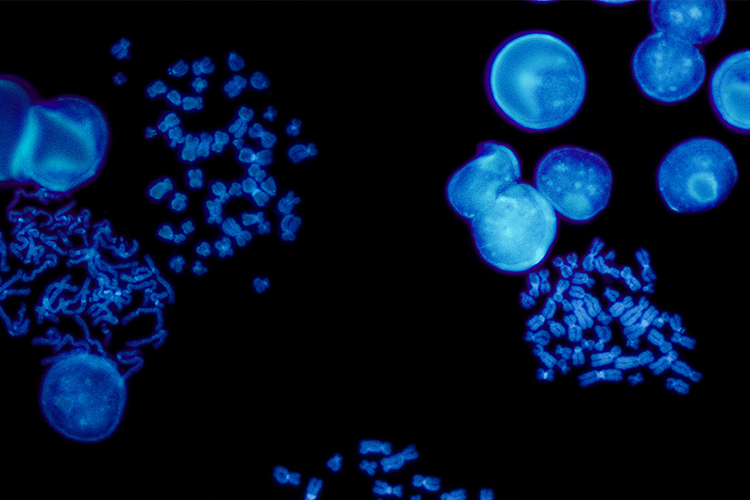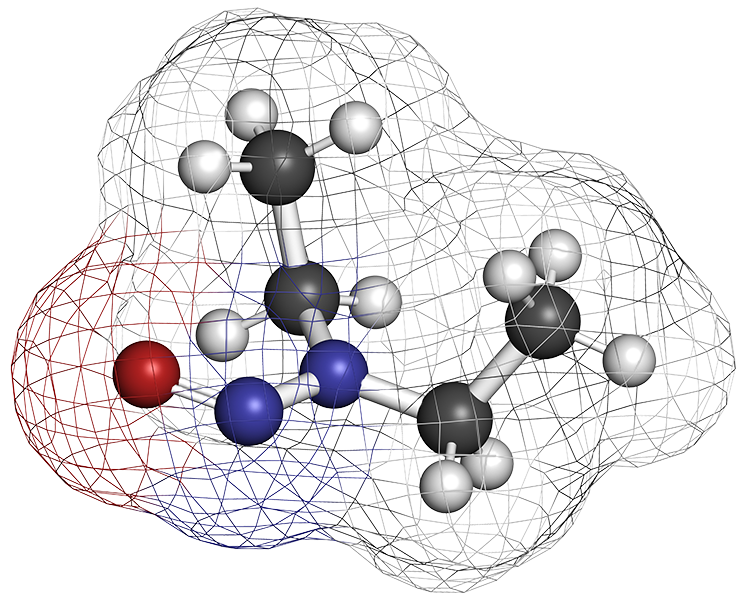Other Genetic Toxicology Assays
Inotiv offers a comprehensive genetic toxicology solution, which includes specialty assays.

GENETIC TOXICOLOGY SCREENING ASSAYS
Inotiv provides insights through a cost-effective, non-GLP genetic toxicology screening program that is designed to quickly determine the genotoxic potential of your substance. Our approaches include:
- Mini Ames assay (6-Well and Standard Plate)
- Microwell and mini in vitro micronucleus assay with flow cytometric or microscopic analysis
- Mini in vitro chromosome aberration assay
- In vitro high content MultiFlow® assay for mode of action predictions
Rationale and Strategies for In Vitro Screening Assays
Early identification of potential genotoxic issues with candidate compounds is an essential part of a product development process.
Advantages of Screening Assays:
- Low(er) cost
- Quick turnaround time
- Minimal test article requirements
- Can be highly predictive
- Focus time and resources on most promising candidates
- Facilitate efficient planning for follow-up testing
Selection of Assays
When designing a screening program, various factors need to be considered including: the purpose of the testing (e.g., outcome prediction for GLP assays or investigation of mechanism of action), how the data will be used, the quantity of test article available, cost and timeline.
High Throughput (HTP) Screening Assays

Inotiv provides testing using the MultiFlow® assay to determine mode of action (MOA) and genotoxicity. This is useful for decision-making regarding continuing compound development.
MultiFlow® is a high-throughput 96-well assay using human TK6 cells and Litron Laboratory’s MultiFlow® DNA Damage Kit. The assay relies on a combination of machine learning and global evaluation factor models to predict the clastogenic, aneugenic, or non-genotoxic properties of test articles based on patterns of test article-induced changes in p53, γH2AX, and Phospho-histone H3 biomarkers and polyploidy.
This is accomplished in a single assay, a feature not found in other screening assays. Moreover, the concurrent analysis of these multiple biomarkers avoids the limitations of predictions based on a single assay or biomarker.
Identification of a clastogenic MOA means that the compound is likely DNA reactive with a linear dose response. Since no exposure or, at best, very low exposure is considered safe, further product development may not be advisable.
On the other hand, an aneugenic MOA means that the compound is likely non-DNA reactive and that there may be a threshold response and a margin of safety that allows for the compound to continue in development. A classification of non-genotoxicant could mean the product is safe for further development.
The high through-put design has short turnaround times using a minimal amount of test article. The MOA information can also be used for designing GLP assays in a smarter way to avoid costly and time-consuming follow-up assays.
Genetic Toxicology Screening Assay FAQs:
How accurate are screening assays of predicting GLP assay outcomes?
The closer the screening assay design to the GLP design, the more predictive the assay; however, it also depends on the differences in the test article evaluated in a screen vs the GLP assay (i.e., purity)
Benefits of running screening assays?
A screening assay can weed out genotoxic compounds early on, eliminating surprising results and potential delays when you start your GLP genetox studies.
How predictive is 6-well Ames to a standard plate Ames?
The plate incorporation procedure uses one Escherichia coli and four different Salmonella strains. The six-well test uses the same plating procedure and evaluation methods as the standard Ames assay in 100-mm plates, but the smaller format requires only 20% of the test chemical. Additionally, the six-well test uses a limit concentration of 1000 μg/well versus the standard Petri plate test limit concentration of 5000 μg/plate. Testing across the two formats resulted in 100% concordance in overall mutagenicity judgement and 94% concordance across all tester strains and conditions. Known mutagenic positive control chemicals were correctly detected as positive in both formats. The overall conclusion is that the six-well assay results are concordant with the standard assay format in this evaluation and could be a reliable alternative. Reference article here.
How predictive is the 2-strain Ames screen to the 5-strain GLP assay?
The 2-strain Ames utilizes tester strains TA98 and TA100. These two tester strains can detect greater than 90% of all mutagens. Therefore this is considered an adequate screen and predictor of the GLP Ames assay. Reference article here.
What concordance does MultiFlow® have with the GLP battery of assays?
The MultiFlow® test is not intended to be a predictor of a specific GLP assay but can be used as a predictor of mechanism of action in the in vitro MN assay or as a mechanistic follow-up to a positive result from the flow-based in vitro micronucleus assay.
QSAR IN SILICO MUTAGENICITY PREDICTION
Inotiv offers Quantitative Structure–Activity Relationship (QSAR) as an in silico method for predicting chemical substances causing adverse effects based on their chemical structures. Our expert rule and statistical-based models include:
- Leadscope
- CASE Ultra
- OECD QSAR Toolbox
QSAR involves in silico methods designed to find relationships between chemical structure and biological activity of compounds measured in in vivo and in vitro assays. This tool is a primary step in lead candidate selection and is useful in pharmaceutical development, agricultural and industrial chemical assessment, and impurity analysis. QSAR models include those for bacterial mutagenicity models for ICH M7 guidelines, carcinogenesis, and various types of organ-specific toxicities. Since in silico analyses do not require synthesis of the chemical of interest, they provide a cost and time effective approach to early screening.
CELL TRANSFORMATION AND CYTOTOXICITY ASSAYS
Morphological Transformation
- Bhas 42 Cell Transformation Assay
- Assay is comprised of two components
- Initiating (Initiator) – used to detect tumor initiators
- Promoting (Promoter) – used to detect tumor promoters
- Cytotoxicity Assays
- Neutral Red Uptake Assay
- A549 cells
- BALB/c 3T3 cells
- Neutral Red Uptake Assay






